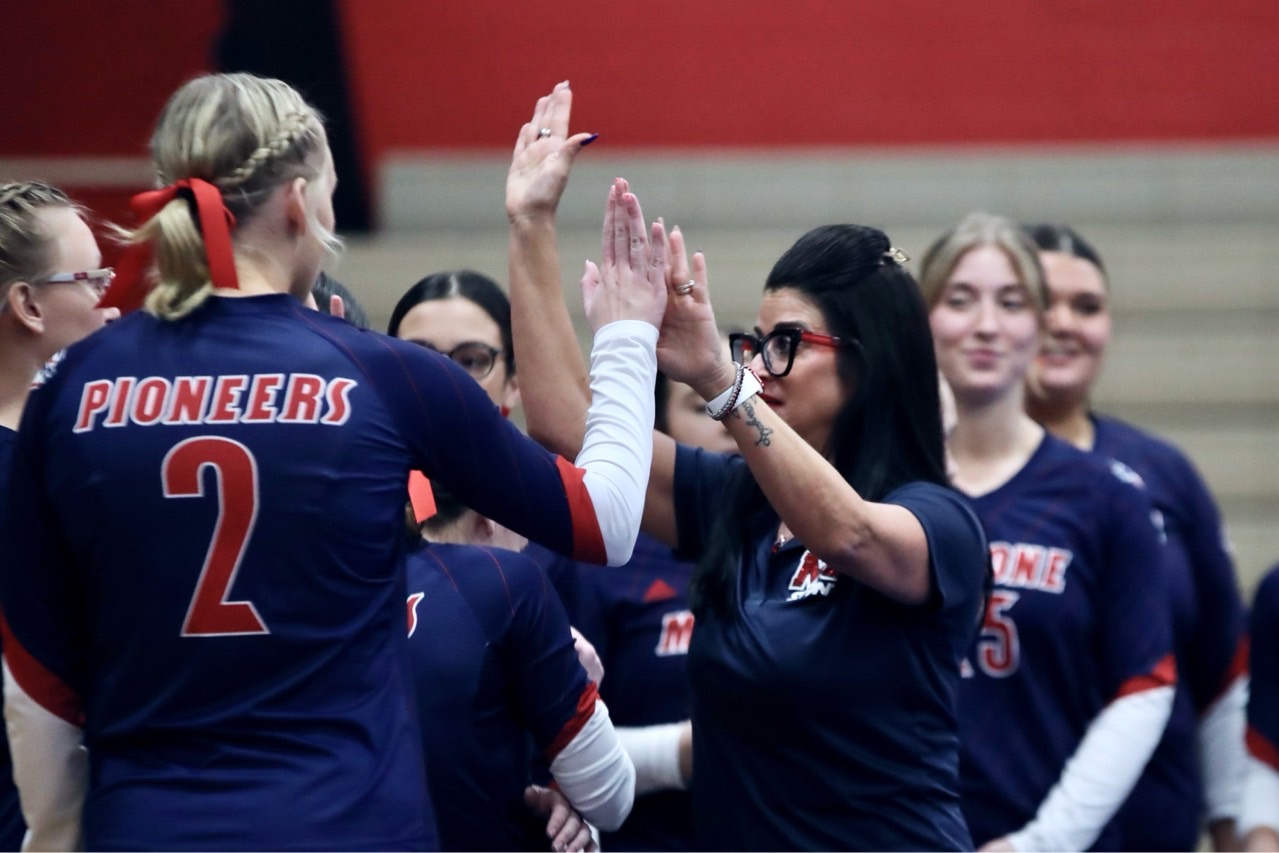How to Fuel Your Athlete and the Whole Family
USA Cheer has partnered with TrueSport, to provide new educational tools to equip coaches, parents and young athletes with the resources to build life skills and core values for success in sports and in life. TrueSport, a movement by the U.S. Anti-Doping Agency, inspires athletes, coaches, parents, and administrators to change the culture of youth sport through active engagement and thoughtful curriculum based on cornerstone lessons of sportsmanship, character-building, and clean and healthy performance, while also creating leaders across communities through sport.

How to Fuel Your Athlete and the Whole Family
Dealing with the preferences and needs of different family members at mealtime can be extremely difficult for caregivers. You may have one child who's going through a 'picky eater' phase, another who's a vegetarian, and a third who comes home famished after two-a-day practices. You may have your own food preferences as well.

KRISTEN ZIESMER, MS, RDN, CSSD, LDN Registered Dietitian, Founder Elite Nutrition & Performance
Often, caregivers try to solve this problem by making different meals for different family members, but doing this costs you time and money, and it doesn't teach your young athletes how to create tasty meals for themselves.
Here, TrueSport Expert Kristen Ziesmer, a registered dietitian and board-certified specialist in sports dietetics, explains how to rethink mealtime for every member of your family while saving yourself time and stress in the process.
Understand the different needs of your family
If you're struggling to feed everyone and mealtime often ends in arguments, you're not alone. Ziesmer says that it's common for mealtime to cause stress, especially when you have multiple children with different needs and preferences. She recommends listing out what each family member needs at mealtime. A young athlete, for example, requires plenty of carbohydrates and at least 20 grams of protein at each meal, in addition to plenty of colorful fruits and vegetables to provide the micronutrients they need. You may also have a young teenager who's a vegetarian, and as such, requires a non-meat protein option to meet their daily nutritional needs. Perhaps you also have a young child who's currently refusing to eat green vegetables, while you're actively trying to lower your carbohydrate intake and need a low-carbohydrate option on the table. Once you have the list of what each member of your family needs, it's easier to break meals down into the necessary nutritional components to keep everyone happy and healthy.
Look at components, not meals
"As a caregiver, you can change your perspective on mealtime," says Ziesmer. "Shift from needing to have a specific meal prepared to a perspective of asking yourself, 'Do I have all the components of a balanced meal? Do I have a carbohydrate on the table? Do I have vegetables? Do I have enough protein? Do I have some fat?' And then, everybody can pick and choose what they want."
For example, rather than serving plates of tacos to each member of your family, set the table with bowls of brown rice, black beans, seasoned ground beef, taco shells, cheese, guacamole, sautéed peppers and onions, romaine lettuce, and spinach. Your hungry athlete can build tacos with all of the ingredients, your vegetarian can omit the beef, your picky eater can skip the lettuce, spinach, and guacamole, and you can make yourself a taco bowl with everything except for the rice and taco shells.
Similarly, with a meal like spaghetti that's typically served with pasta and a red sauce with beef mixed in, you can split it into pasta, sautéed spinach, red sauce, cooked ground beef, white beans or seasoned crumbled tofu, and shredded parmesan. Your athlete will likely eat a big helping of pasta with all the toppings, your vegetarian can skip the beef, your picky eater can skip the spinach, and you can opt for a smaller pasta serving with more sautéed spinach.
Start with simple building blocks
Ziesmer is a fan of meal prepping once a week, or once every 3-4 days if that's easier. "What it comes down to is just having basic ingredients on hand and ready for mealtime," she says. "That way, everyone can just make their own meals as needed." This means prepping staple ingredients like brown rice, chicken breasts, tofu, beef, roasted vegetables and beans in the oven, slow cooker, rice cooker, or grill. It can also include chopping up raw vegetables for easy meal additions, like peppers, tomatoes, and onions. The more you can streamline ingredient preparation for the week, the less stressful mealtime is likely to be, and the easier it is for your athletes to add extra proteins or carbohydrates to meals and snacks when needed. You can also get your athlete involved!
Use leftovers for lunches
After dinner, rather than packing up all of your leftovers for the next night, enlist your athlete's (and other children's) help to build their lunches for the next day. They may build the same meal in a to-go container, or they can use components from dinner along with wraps or bread to create burritos or sandwiches. Again, Ziesmer notes that this is great for athletes of any age, but especially older athletes who will be in college and eating on their own in the near future. You're helping them learn how to build a meal, rather than having them continue to rely on you.

Streamline breakfasts as well
This idea of a buffet at mealtime can apply to breakfast and lunch as well, says Ziesmer. This may take some trial and error at first: Experiment with what ingredients most of your family prefers and build from that. Create a buffet-style breakfast bar with oatmeal or yogurt as the base, with things like granola, nuts, dried fruit, fresh fruit, nut butter, and honey or maple syrup. Your athletes can build their meals based on hunger levels and personal preferences, and your mornings will feel less stressful as a result. For families with more varied food preferences, sandwiches or toast for the breakfast base might be easier than oatmeal.
Don't push picky eaters
Rather than forcing a picky eater to try different foods, Ziesmer is a fan of repeated exposure while also ensuring that nutritional needs are met, even if that means compromise on your part. If your young athlete doesn't like most meats or is currently a vegan, for example, you do need to make sure that there is a protein option available for them at each meal. For the picky eater who hates green vegetables, make sure there are other red, yellow, and orange vegetables at mealtime.
"You can also try exposing them to certain foods in different ways," she says. "Your child may say they hate carrots, but what about raw carrots with a certain type of dip, or roasted purple carrots? Give them different options to try and understand that they likely will change their minds over time." She adds that you can also be slightly sneaky with vegetables like spinach that can easily blend into sauces without being detected.
Takeaway
As a caregiver, it can feel as though you need to make different meals for every person in your family to account for different diets, restrictions, preferences, and dietary needs. But instead of preparing individual meals for each member of the family, consider a buffet approach to mealtime that allows each person to tailor their meal to their specific needs, ensuring that your athlete gets the carbohydrates and protein that they need to repair and rebuild muscle for their next practice.
What is TrueSport?
The TrueSport Champion Network is a community of coaches, parents, program directors, and athletes who believe in the power of youth sport to build life skills and core values for success both on and off the field. Join TrueSport Champion Network to help promote the positive values of cheer, dance, and STUNT!
The TrueSport Coaching Education Program empowers coaches—the most significant influencers in young athletes’ lives—with a transformative learning opportunity to obtain the knowledge and resources to cultivate, champion, and uphold the rich promise and highest potential of sport.
Additional Training Modules from TrueSport
USA Cheer is proud to partner with USADA’s TrueSport® to bring relevant educational content to the Cheer and STUNT community in order to promote a positive youth sport experience. We are excited to provide access to TrueSport’s experts that take coaching beyond skills and help truly develop the overall athlete by building life skills and core values for success on and off the mat, sideline, field, and court.
Feel free to share these resources with your coaching staff, parents, or athletes!
About TrueSport
TrueSport®, a movement powered by the experience and values of the U.S. Anti-Doping Agency, champions the positive values and life lessons learned through youth sport. TrueSport inspires athletes, coaches, parents, and administrators to change the culture of youth sport through active engagement and thoughtful curriculum based on cornerstone lessons of sportsmanship, character-building, and clean and healthy performance, while also creating leaders across communities through sport.
For more expert-driven articles and materials, visit TrueSport’s comprehensive library of resources.
This content was reproduced in partnership with TrueSport. Any content copied or reproduced without TrueSport and the U.S. Anti-Doping Agency’s express written permission would be in violation of our copyright, and subject to legal recourse. To learn more or request permission to reproduce content, click here.




